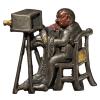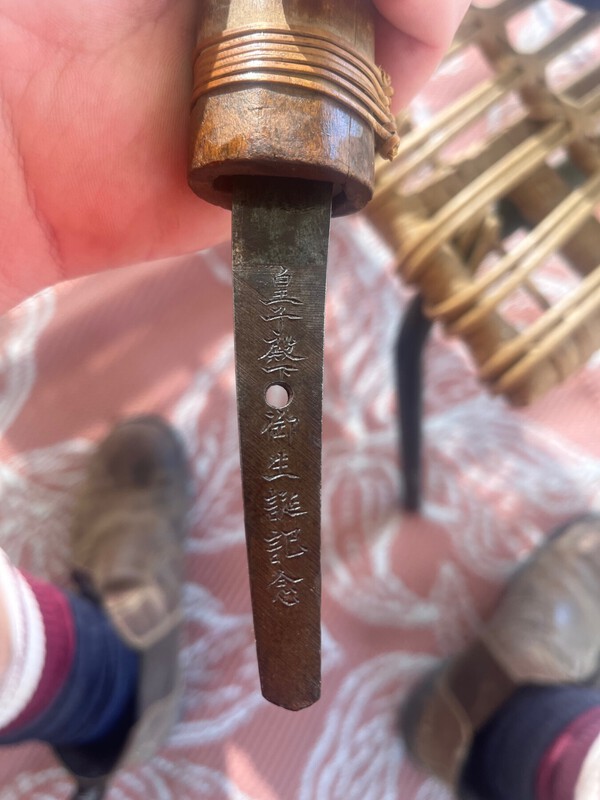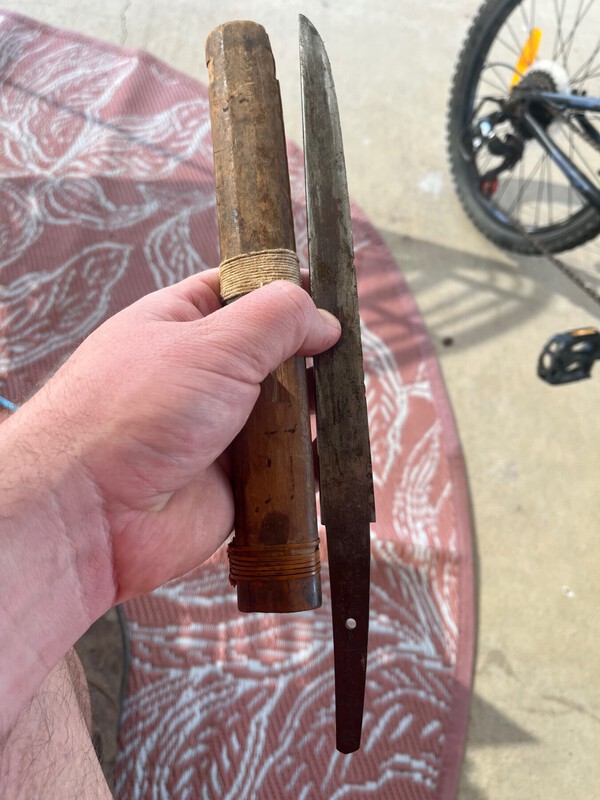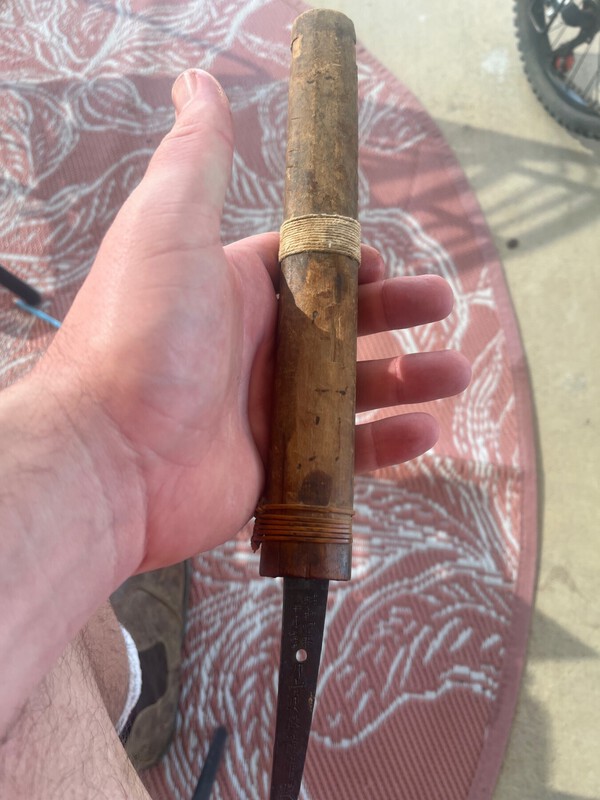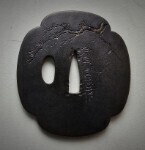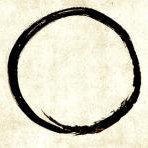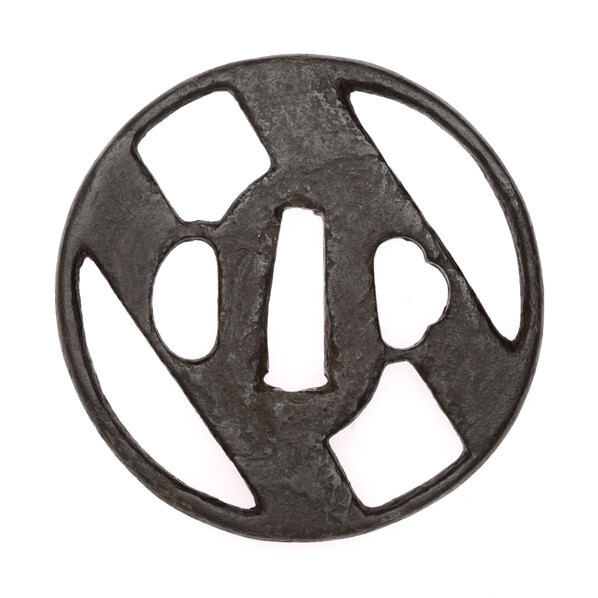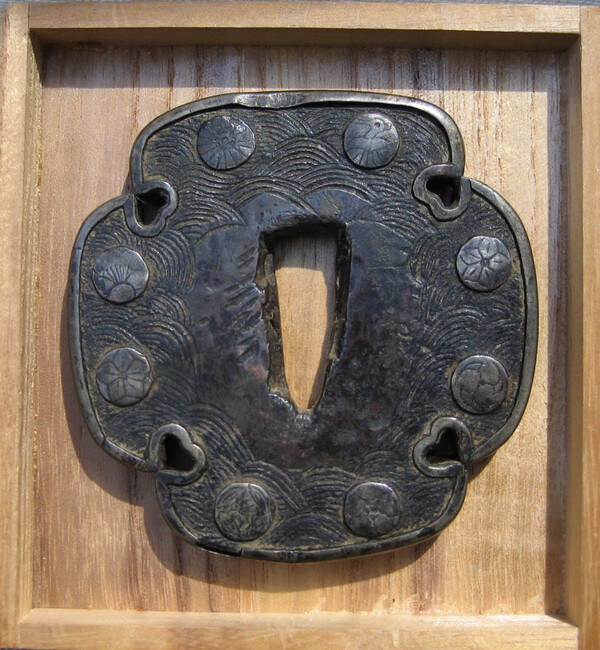Leaderboard
Popular Content
Showing content with the highest reputation on 09/12/2023 in all areas
-
I have a weakness for reading historical fiction. I have often found that I can learn more and concentrate more when historical incidents are woven in to a story than when presented as naked facts. Recently I have dipped back in to a series of Novels tracing the rise of the Mongol empire. This morning when reading about the first stages of Genghis Khan's invasion of what is now Iran I was reminded that while these events were happening a Smith in Japan was forging a blade I have had the chance to study in hand and in great detail. The blade in question is now about 800 years old. When looking at it it is almost impossible to believe that it could have lasted so long and remained in such good condition. However this is not unique. In this field we are constantly shown blades that have survived through major world events, the rise and fall of empires and numerous attempts of mankind to destroy itself. And yet here they are as Cameron Stone described them "The nearest thing to perfection made by human hand" I think we see so many fine works spanning the centuries that we (I) risk becoming a little complacent and start taking what we are looking at for granted. Occasionally we need to stop and take a reality check and just appreciate how luck we are to be involved in a subject that offers such a wealth of artefacts to study and enjoy.12 points
-
@BIG A longtime friend sold me this one when I had a bit more in my pockets one month. It is a very unusual/atypical Yagyu design. Ie. Not one you look at and go "Oh, Yagyu!" In hand, especially the mimi-sideview give it to Yagyu. It represents the 4 classes of Japanese Society: Farmer, Samurai, Merchant, Artisans5 points
-
This is just my opinion but 7M yen is greatly overpriced. I believe USD vs. Yen has shifted a lot from spring as this was listed in April for 64k USD. https://web.archive....o-token-certificate/ Here are some comparison items for viewing. Unshō katana (mumei) - c. 2,7M yen Jūyō 55 - https://www.aoijapan...thk-55th-juyo-paper/ Unji tachi signed & dated 1327 - c.7M yen Tokubetsu Hozon (this item is absolutely wonderful historically) it seems to have sold lately, one of the most interesting blades of this school I've seen being sold online - https://eirakudo.sho...katana/detail/768547 Unji tachi (mumei) - c.2M yen Tokubetsu Hozon - https://web.archive....cn11/cn22/pg544.html Unji tachi signed - c.2,5M yen Tokubetsu Hozon - dealer didn't sell this at auction but it was gone from their website fast where it was listed for price mentioned here: https://buyee.jp/ite.../auction/q1098056239 Unji tachi (mumei) - c.2,5M yen Jūyō 49 (koshirae) - https://www.aoijapan...th-nbthk-juyo-paper/ Unji katana (mumei) - c.8-10M yen Tokubetsu Jūyō 6 - Qualitywise probably among the best Unji that have been online sales, this has been through multiple dealers: https://www.samurai-...net/SHOP/V-1800.html Unji katana (mumei) - c.4,5M yen Jūyō 53 (koshirae) - https://www.seiyudo.com/ka-020321.htm Unji katana (mumei) - c.2,8M yen Jūyō 22 - Kirill linked this one earlier https://web.archive....the-22nd-juyo-token/ Unji katana (mumei) - c.2,7M yen Jūyō 21 (koshirae) - https://www.aoijapan...th-nbthk-juyo-paper/ Unji katana (mumei) - c.2,7M yen Jūyō 17 (koshirae) - https://www.aoijapan...th-nbthk-juyo-paper/ Unji katana (mumei) - c.3,5M yen Jūyō 13 - https://eirakudo.sho...katana/detail/224967 Unjū katana (mumei) - c.1,5M yen Tokubetsu Hozon - https://eirakudo.sho...katana/detail/213458 Unjū katana (mumei) - c.4,5M yen Jūyō 65 - https://katananokura.jp/SHOP/2104-K01.html Unjū katana (mumei) - c.2,5M yen Jūyō 62 - https://web.archive.org/web/20220930200639/https://www.touken-sakata.com/刀剣一覧/刀-無銘-雲重-古刀-上作-良業物/ Unjū katana (mumei) - c.2,9M yen Jūyō 48 - https://www.aoijapan...attributed-as-ynjyu/ Unjū katana (mumei) - c.2,5M yen Jūyō 27 - https://www.aoijapan...th-nbthk-juyo-paper/ Unjū naginata-naoshi (mumei) - c.2,5M yen Jūyō 27 - https://web.archive....0/SHOP/1203-K11.html5 points
-
Truth for certain when you think of all the "stuff" made now that has a built in obsolesence. Most appliances, washers, dryers, refrigerators with all the hi-tech and costing thousands of dollars will work and be around for about 5-10 years. Cars are gone in a heartbeat - yet a forged pile of iron ore has a finish like glass and will cut like nothing else is still as made 800 years ago. It is a testament to the care that generations of people have put into keeping it so and I am proud to be one of them !4 points
-
As it happens I have found a Nobuie 'centipede' tsuba - and it does look a lot like the Sotheby's Myochin. https://www.lot-art....suba-30.10.17-bonham4 points
-
OK, let us be constructive here, dear friends: - Vu acknowledges he is a beginner who has a lot to learn and has ordered books to read; - Vu has taken some appropriate steps in asking around and going to dealer shops in Japan (where V has been for a couple of weeks), so V has seen in-hand swords. So, yes, V has not been to the San Fran show but in Japan given the FX rate, one can find more and even better bargains if one knows where to look; - It is somewhat clear that he likes 'old' swords - whether due to a fascination with history or some romantic notions or a deeper belief, we know that much from statements above. So far, so good. It is not clear whether there are other features (eg a certain tradition, or workmanship characteristics, or specific smith) that are desired, but I presume Vu has not progressed his understanding and appreciation to such a degree as to formulate a perspective. But there is no need to be aggressive or offensive. In fact, this Unju sword (Nanbokucho era) ticks the 'historic' boxes, is Juyo- (ie rather highly) rated and it also comes with a tachi koshirae (most swords do not come in a tachi koshirae and to a novice, a nice itomaki is impressive for sure). - Yes, it probably started life as a 'proper' tachi with a tachi side mei, but in its 650-year life is has been shortened and thus lost its signature on the tang. - So the blade is now technically 'only' a katana. But at the same it is in tachi koshirae. One can delve further to specify (a) the overall sword (blade+koshirae) is a tachi or not or whether (b) the blade itself is only a katana. The blade (a katana blade) is in tachi koshirae so if one does not look at the tang or Juyo paper, it is a tachi to the onlooker. - The inverted commas I have included portray my sentiment that it almost does not matter if the mei is there in terms of appreciating the workings of the sword and the craftsmanship in it (unless one is focused on collecting zaimei ubu swords, which I acknowledge usually command a premium for the state if preservation). - If Vu is after potential for appreciation (or at least value preservation), then he can look for ubu zaimei swords with some documented provenance. These usually retain their values and appreciate but are very rare for Kamakura and Nanbokucho. I agree with Kiril's points above: the Unkai school is a fairly decent Bizen school, very reminiscent of Aoe and probably underappreciated by people. There are some very high-quality Unkai blades. It might not be as prestigious as other Bizen schools and hence there could be a trade-off here. Indeed with the current FX rate, it is worthwhile shopping around and not jumping at the first blade that seems attractive. This is a good package (blade+koshirae = what buyers perceive as a full 'sword') but it is not cheap. I think one needs to factor a bit the Juyo paper (priced in the package) and also the koshirae. Such itomaki koshirae are not cheap. Personally, I would also go after Unsho or Unji if I could or found a decent one, as opposed to Unju because I like the better refinement of the former. Somehow the jigane and hataraki of the former two are more sophisticated and elegant. However, again we do not know if Vu is after that and he might prefer the more masculine shape of Nanbokucho blades (hence the Unju shape). Etc etc4 points
-
Type: Katana Ubu, Suriage or O-Suriage : Ubu Mei : (Mumei, Signature) : SIGNED - UDA KUNINARI Papered or not and by whom? : NBTHK HOZON Era/Age : 1469AD (MUROMACHI PERIOD) Shirasaya, Koshirae or Bare Blade? : Shirasaya Nagasa/Blade Length : 65.5CM Nagasa, 26” Sori : .5CM Flaws : see pictures Sword Location : USA Will ship to : Anywhere Payment Methods Accepted : Check, Paypall, Bank transfer Price and Currency : 5750 USD Other Info and Full Description : This koto (old sword) katana is in a very rare shape called katakiriba. Most katakiriba swords were made in the shinto period (1596 onward), however this blade was made by an Uda Smith named Kuninari around 1469AD. Kuninari is a very rare smith in the Uda school to find, with Kunimune being the most prolific. Markus Sesko believes this was special-ordered by a wealthy bushi to be used as a side arm were his tachi to have become broken in battle. The mei is well-preserved, and the nakago is ubu with a uniform and rich chocolate patina. The blade is in fantastic condition. The hamon flares out at the end in a Norishige style. Uda smiths worked in a mixture of the Soshu and Yamato traditions. The shirasaya was written by Dr. Kanzan in 1967. “Uda Kuninari, Ubu Nakago, Zaimei, Chinpin Nari.” A well-preserved and fearsome sidearm from the Sengoku Jidai.3 points
-
3 points
-
I couldn't agree more. Being grateful and content that your collection contains a few nice historical treasures is something important to have for collecting long term in this hobby. Thank you for sharing wonderful photos of your sword and emphasizing such a crucial point.3 points
-
3 points
-
I think you're making all sorts of mistakes here. You realize that you don't have to go to Japan to buy a nice Juyo Kamakura period sword for $40K+? You seem to be in California...you should have gone to the SF sword show and found many there to look at and buy. You need far more learning before spending that sort of money. If it were me, I'd make a plan to go to the big Japanese sword show in Vegas in January. There, you'll find good advice and plenty of swords to consider in that range. This isn't something you buy just because it's old. And you need to learn first what is quality and what isn't. Forget original fittings of that age...not going to happen. They changed several times over the lifetime of a sword. This isn't a "spur of the moment" decision, and since you cannot bring it back with you anyways as it needs to be deregistered...take some time and get advice and then decide what shape, style, era etc you are looking for.3 points
-
And one of the members finally nailed it: „Your menuki is Choryo with a shoe (not a tide jewel) and Kosekiko with the military strategy scroll (that he gives to Choryo after Choryo retrieves his shoe...)“ Thank you all!2 points
-
AFAIK, nioiguchi is the hamon line, but more importantly, is the presence of nioi or nie in the blade in that area. It's possible there's Japanese smiths working in China or some other place who make these "Komonjo specials," however, we don't know, and are unlikely to ever know where they come from. I would definitely say though that there are native Chinese smiths that have the skills to make such a blade. To get the fine hada seen, the steel has to be folded 10 times, and the steel used here is probably some kind of orishigane. I doubt you can get good nioi or nie with anything other than tamahagane though. As for the polish, it's not surprising they cut corners! I strongly suspect all these are oil quenched, which is the standard for all blades in China.2 points
-
And the motif has been already discussed, although the representation was somewhat different than on those menuki: https://www.militaria.co.za/nmb/topic/27799-motif-tale/2 points
-
2 points
-
2 points
-
2 points
-
I kind of know him personally. I think items are usually pretty cheap and worth it, he buys cheap swords and fix the wrong parts if needed, then sell it.2 points
-
Lots of great advice in this thread. I do not think Samurai Museum’s prices are ever competitive, and I would not look there for a Juyo piece. As others have said, above $30k you have lots of great options. Since you’re in California I suggest you look up Mike Yamasaki of Tetsugendo. He will not steer you wrong in pursuit of a Juyo sword at a fair price.2 points
-
I have more than a few blades like this, also purchased from komonjo. I wouldn't have bid on this one though, because I consider the start of the hamon to have been hardened too far from the edge in several spots. It's not a problem for display, but may be a problem if you plan to use it! It's hard to see, but I suspect yours has been machine ground on the end of the nakago, and the flash was not filed off, a tell tale this is Chinese. Also, as mentioned, no nioi or nie to speak of. Still, these "Komonjo specials" show a very fine hada, and are otherwise very well forged. The polishing isn't bad, but they are deficient in the time spent on the uchigomori and jizuya/hazuya steps (the most time consuming). Personally, I would be happy I found such a fine reproduction at such a low price! This is not a nihonto, however, but a good quality clone. Many other owners of these swords on another forum are very happy with these blades as reproductions. Try making one of these for the price you paid! There are a lot of different words for "new" Japanese swords, and they mean different things to different people. Gendaito, shinshinto, and shinsakuto are just some of them. You also hear Showa a lot, but less so Heisei or Reiwa. There's more than one forum post on the NMB about this, and there seem to be different opinions about what they mean, and no agreement! I think the best is just to say when it was made if you know, and use "recently forged" in English instead of the Japanese names, since they can be confusing.2 points
-
My personal opinion is that Den- matters a lot less with fittings than with swords. In usage, it is equivalent to "More or less". With a few schools like Kaneyama tsuba, the NBTHK seems to use it as a short change. With other schools, it is more of a positive away from kodai or other vague descriptions. With Higo schools, I would say the Den- is almost always a positive. With Yagyu, it is hell of a lot better than Kodai Yagyu. So basically Yagyu "More or less". ie. Very much Yagyu = NOT kodai-Yagyu. This one was with Touken Koumachi and looked a relative bargain. If I did not already have my "One-n-Done" TH Yagyu of a design with significant meaning to me, I would have picked up this one. I will admit I thought about it a bunch of times. There aren't many good tsuba out there at a decent price. This was one of a small group waiting to get picked off. Peter pulled the trigger. Good to him.2 points
-
2 points
-
Swords 1. Long, signed and papered hirazukuri wakizashi in shirasaya with fittings on a tsunagi by one of the later Soshu Hiromasa, so early 1500s - £3,550. 2. Signed and papered Mino tachi (well, it’s signed tachi mei but the NTHK paper lists it as a katana), dated to around Eikyo (1429 to 1441) in old shirasaya signed Munemitsu £2,250. 3. Long, decent quality wakizashi, in old shirasaya, probably sue Bizen, signed but sold as gimei £675. Yari Signed, mounted, Edo period fukuro yari with small blade in reasonable polish and hamon and hada are visible with a keen eye. Signature reads “Nobukuni” and these guys are to yari what the Sukesadas are to sue Bizen swords. A bunch of them working in (IIRC) Chikuzen in the 17th and 18th century bashing out spears. The haft has been cut and some of the binding on it is decayed. Saya is done in gold lacquer with a horse hair plume. £175. Katanadansu Three drawer katanadansu made from Paulownia but quite bashed about and with damage to one of the drawers. Bought from Schelma in Belgium on the basis that it was Meiji period, but it might be later - £775. Katanakakke Modern katanakakke holds 4 blades I was told it came from Japan. Made from two different types of wood, a wooden panel with tsuba design mounted in a heavier wooden frame. If it did come from Japan then I think the frame and base may be Zelkova and the panel Paulownia but I really don’t know. £175. Tsuba Boxed unless otherwise stated: 1. Ko Kinko Chrysanthemum motif tsuba in yamagane nanako in fitted box with Tokubetsu Hozon papers - £550. 2. Tosho tsuba, probably early Muromachi period, dragonfly motif. £625. 3. Large steel Muromachi period tsuba, probably Saotome school with (I think) cloud theme done in sukashi with some gold and shakudo infill - £650. 4. Papered Ko shoami tsuba with old coin motif, £350. 5. Good quality steel Kyo shoami tsuba with theme of noshi done in sukashi, £450. 6. Heavy Kaga school tsuba, steel with gold inlay of insects and Autumn flowers £375. 7. Heavy yamagane tsuba with folded rim showing Mount Fuji four times with falling show. £275. 8. Edo period tosho tsuba with mon and amida yasuri - £175. 9. Cute wakizashi-sized tsuba with geometric patterns maybe Akasaka school - £275. 10. Higo school (maybe Akasaka school) sukashi tsuba of warbler in plum tree £450. 11. 19th century Higo school tsuba with spool for spinning yarn theme by Higo Kumagaya school or by Nakane Heihachiro - £425. 12. Russet iron tsuba signed Seiryuken Eiju plus kao. The common punched design of “seven treasures” repeated. You know the one. £125. 13. Large modern reproduction of Akasaka design “Shiguretei” – “seasonal rains pavilion” tsuba. Suitable for mounting on an Iato and free to a good home. Not boxed. 14. Good quality shakudo nanako kozuka with inro motif in a fitted box. £475. 15. Very old and worn soft-metal kozuka with motif of flowers and oxen. Sold in a soft pouch and not a box. £65. Tsuba boxes Paulownia wood, some new and some used. Good ones £15, the bad and ugly ones £10. Book list to follow.2 points
-
The Ukai school goes back to the brothers Kunitomo and Kuniyoshi. Both of them, apparently also in Kyoto, forged swords for Emperor Go-Daigo and received from him the kanji "Un" (Sino-Japanese reading for cloud). From then on, the blacksmiths of this school used this kanji in their names (Unji, Unjo, Unju etc.). Unjo, for example, means "living in the clouds" which is a synonym for the imperial court. Ukai itself is a place in Bizen, but Kunitomo and Kuniyoshi adopt the Yamashiro style and bring it to Bizen, influencing Osafune forge as well. Unji is considered the best ukai smith, and the sugata of his swords often matches the elegant sugata of Yamashiro blades of the early Kamakura period, which became popular again in the late Kamakura period. A trademark of early Ukai blades is a stained-appearing utsuri, which looks as if someone has grabbed the blade with fingers. Go-Daigo slowly began to set the course to overthrow the Hojo and Kamakura Bakufu beginning in the 1320s. During these years, a conspicuous migration of swordsmiths to provinces from which Go-Daigo hoped to gain support begins. After the Kemmu restoration of Go-Daigo is eliminated by Ashikaga Takauji himself and the country splits into supporters for Go-Daigo or for Ashikaga Takauji (Nanbokucho conflict), the Ukai smiths continue to make swords for the Go-Daigo faction. This juyo dates exactly from the time of the Nanbokucho conflict and shows the typical shaping of Nanbokucho blades. Unju is an Ukai smith from the late phase of this school starting around 1350, so he is not necessarily comparable in value to smiths like Unjo or Unji from the founding phase of the school in the late Kamakura period. This may be something to consider...2 points
-
2 points
-
Thanks @BIG for the additional photos of your fine tsuba. I really like Yagyū tsuba but do not own any antique ones, but I have two modern tsuba one I had a custom made for my martial arts training sword. It has a classical Yagyū design. In the photo below I am using the modern Yagyū tsuba and demonstrating Yagyū Seigōryū Battō (柳生制剛流お抜刀). My teacher trained at the Yagyū Kai in the 1980s under Yagyū Nobuharu 21st headmaster of Owari Yagyū Shinkage Ryū. Here is a photo of my Yagyu Tsuba Utsushi unmounted from the sword and the historical example with NBTHK paper reference. The design of the tsuba references the first kata set of the Honden: Sangakuen-no Tachi.2 points
-
Dear All, I have a table booked at the Birmingham Antique Arms Fair this coming Sunday. I have some swords, tsuba, books, a yari and a sword chest to sell. Prices will be competitive and I'm open to a degree of haggling so please swing by to try to snag a bargain. Alternatively, just drop by and introduce yourselves. I'll add a list of items and prices shortly and if anyone would like further details or photographs please PM me. Hope that's OK with the mods...and as I'm using the forum to plug my sale, a donation will be made. Thanks in advance for looking.1 point
-
1 point
-
This has been a top goal of mine for some time. A long time. While not quite 100% complete (need a signed Norikatsu tanto), it's still something I am excited about. A full set of masame hada works by the great Shinshinto smith Norikatsu, with one by his finest student Masakatsu, to round out the set. Often in our study and searching, a million things can and will jump out at you, temptation is everywhere. Staying focused and with your primary desires in mind at the end, is as rewarding a feeling as one can have. At least it feels that way when I lay out this family of works. Katana: “Made by Katsumura Norikatsu, resident of Suifu ‒ “On a day of the eighth month, Keiō three (1867)" Wakizashi: “Made by Norikatsu, a resident of Mito, on a day of the third month Bunkyū one (1861)" O-Tanto: unsigned: Mito Masakatsu1 point
-
1 point
-
1 point
-
1 point
-
Yes, I'm aware of this work and like it quite a bit. Thank you for the link.1 point
-
Arnaud needs advice about the DEN. Thought your thread will help, esp. Currans post about the owari schools.1 point
-
Hoki kami Taira Ason Masayuki Date looks like: kansei 3 ( 1792) in February. Looks shoshin to me1 point
-
AFAIK the ambiguity is only about gendaitō / shinsakutō which can mean different things for different people. As per Markus Sesko: There should be zero ambiguity about shinshintō: or Showa, Heisei and Reiwa which are nengō era names. Note: Showa should not be confused with Showatō which denotes non-traditionally made swords. Finally, shinsakutō:1 point
-
Indeed there is one in San Francisco with next meeting this Sunday 9/17 (Yamato school lecture). Not missing that one Meetings (ncjsc.org)1 point
-
Maybe the Sotheby's copy writer got a little overly enthusiastic But seriously, I wonder where the source of the story about shingen tsuba came from/was first recorded. As collectors we take so much of this as gospel w/o really knowing where the reference came from... Best, rkg (Richard George)1 point
-
Jesse, these YANONE look more like presentation items and not made for actual use. Very ornate and interesting!1 point
-
1 point
-
1 point
-
Oh wow, that's beautiful! I'm having a hard time getting a response. He must be quite busy these days.1 point
-
1 point
-
Don’t know why someone would think komonjo sells something modern that is not Gimei. The real fun part are the people who always tell what all of there komonjo stuff papered but noone shows the blades and the papers to proof it. This happens so consequently that I’m sure they lie1 point
-
Hi, Thanks Ed, found and bought one already (outside of forum). Topic can be closed. Thank you again to all that helped!1 point
-
Here is a link to another tanto like yours. Tanto : Gassan Sadakatsu – 日本刀販売の葵美術 (sword-auction.com) Cheers, Bryce1 point
-
1 point
-
They don't have it on their website. They are deleting pages of sold items it seems Here I downloaded the original image from IG page source and copied their description: "Hello, world! Thank you for checking our daily post. We are excited to show you another newly acquired Wakizashi. This blade signed by Kouto Jyu Jyumyo (皇都住寿命) during SHIN SHIN TO era (late Edo Period: Late 18th-Mid 19th century) according to NBTHK’s appraisal. Kouto is literally translated as a city of the emperor. Back then, the emperor of Japan resided in Kyoto. Therefore, Kouto Jyu means that he lived in Kyoto city when he forged this blade. Kyoto city is located in Yamashiro province. He belonged to Jyumyo School. This blade is appraised as a Tokubetsu Hozon Token(特別保存刀剣) issued by NBTHK(Nihon Bijutsu Touken Hozon Kyokai:日本美術刀剣保存協会). This authentication paper was only given to authentic Japanese swords, especially well preserved and high quality with artistic value." I've also found the same post on their Facebook: https://www.facebook...BHfFPyvFDn11ae7Quzcl Hope that helps1 point
-
You are asking two possibly complicated questions: value and equivalence. Its not a high value art sword, or even a high value antique, but value is subjective. Despite the funky signature, it does look like an authentic Japanese sword, possibly several hundred years old. Sub $500 on today's market, would be my guess. But I think everyone on this board would cringe at it being called a Walmart sword. Its a real Japanese sword (at least, it looks like one from the pictures), so it has real history, and at one point it had real utility and value. In the hands of a properly trained togishi (polisher), its old glory could well be restored. This is nothing you can buy at Walmart. And we get so many people on the board who proudly post their first purchase, only to find out that it is a Chinese-made replica. You are already through that minefield unscathed, so that's why it feels wrong to write this off as some mass-produced piece of junk. The other thing is: if you (or us) get into the habit of denigrating these old swords, its a very short step to abusing them, subjecting them to the old "sandpaper polish", or otherwise trashing them with the justification that they are "junk".1 point
-
Mark, I think you are right that it was Muromachi period. The seller described it as "Kamakura period". Still, I don't think it was a very good piece. The same seller has another up, but I suspect it is a revival piece or that the silver fukurin was added later. It doesn't look right to me. I've owned 3 over the years. My favorite is now owned by one of our other NMB members, who rebuffed my efforts to buy it back pre-Covid 19. Picture attached from when I owned it. If he wants me to remove it- I will. It was heck of a lot better than the Yahoo!Japan one you posted. Should I see another, I will send you a PM. I enjoy them very much to study, but no longer wish to own them.1 point
This leaderboard is set to Johannesburg/GMT+02:00



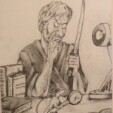
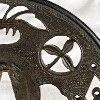
.thumb.jpg.18438d253f4667c1dddb27fc53782b7d.jpg)
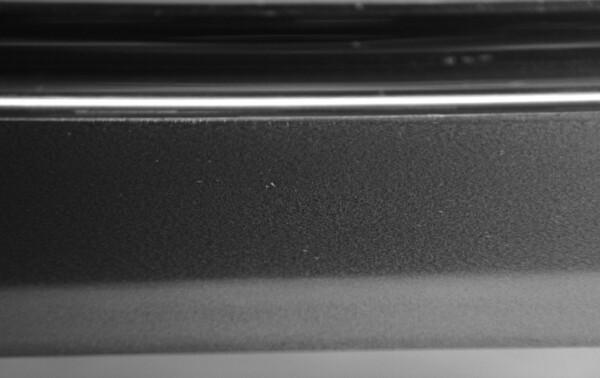



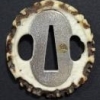
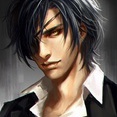

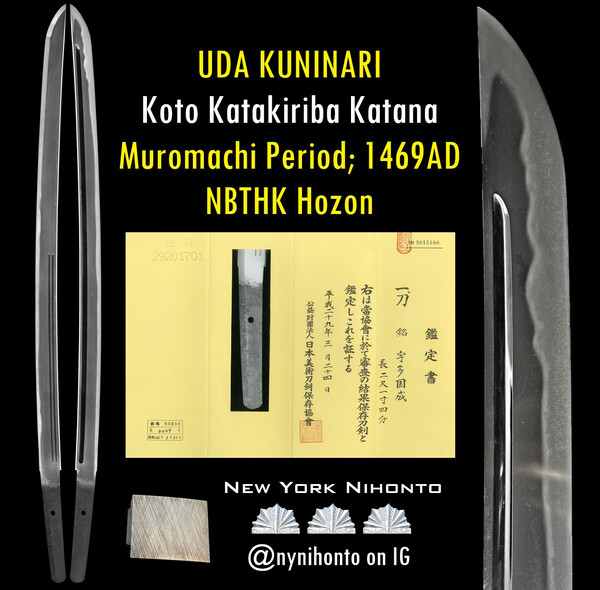

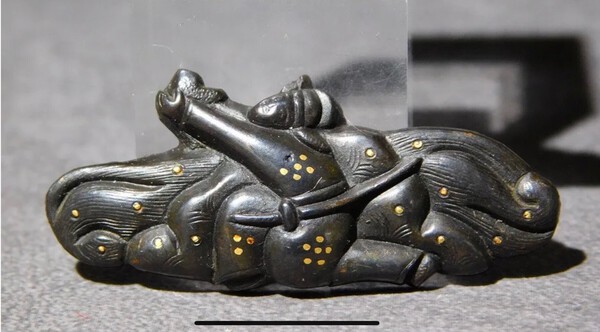


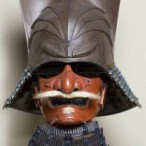

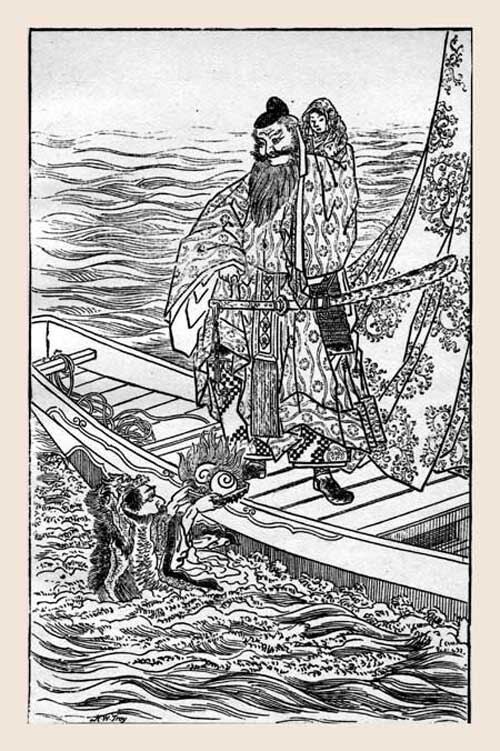
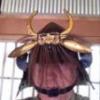

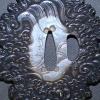



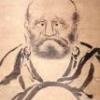


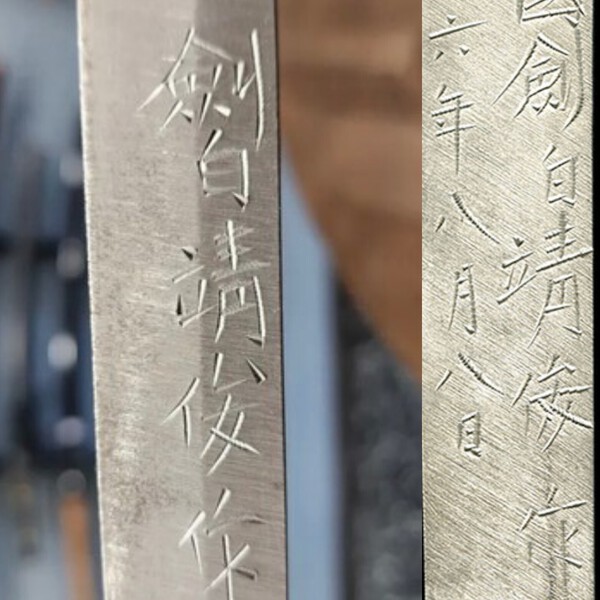
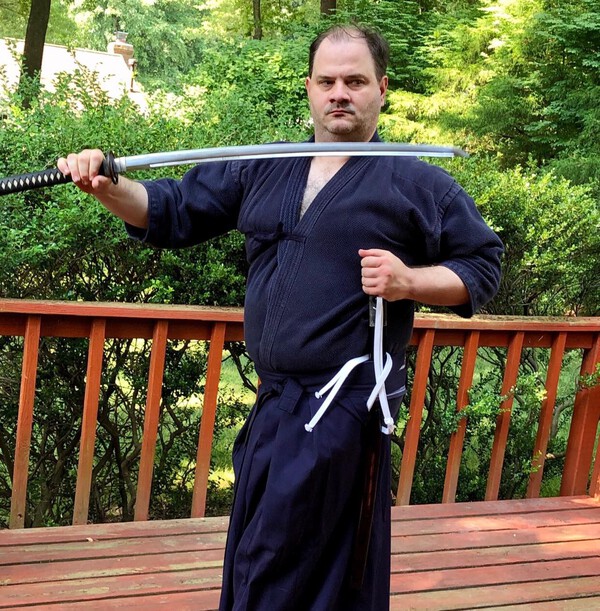
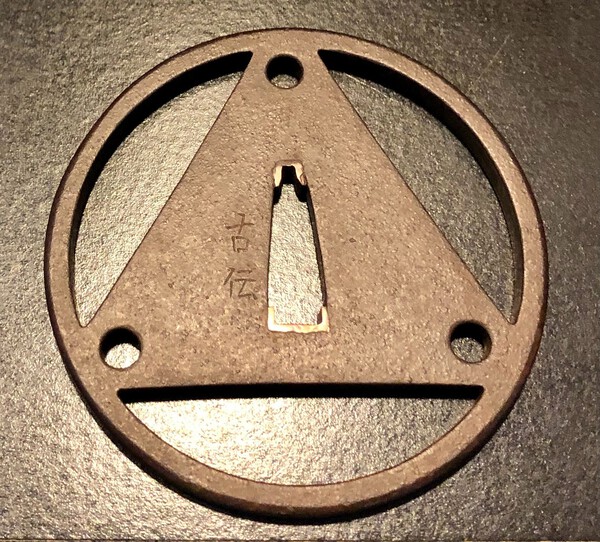
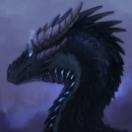

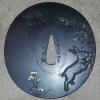
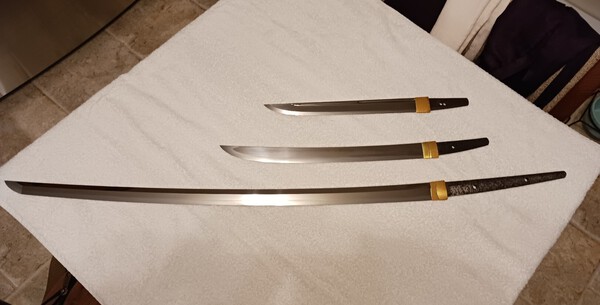
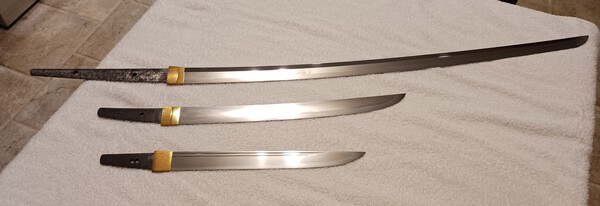
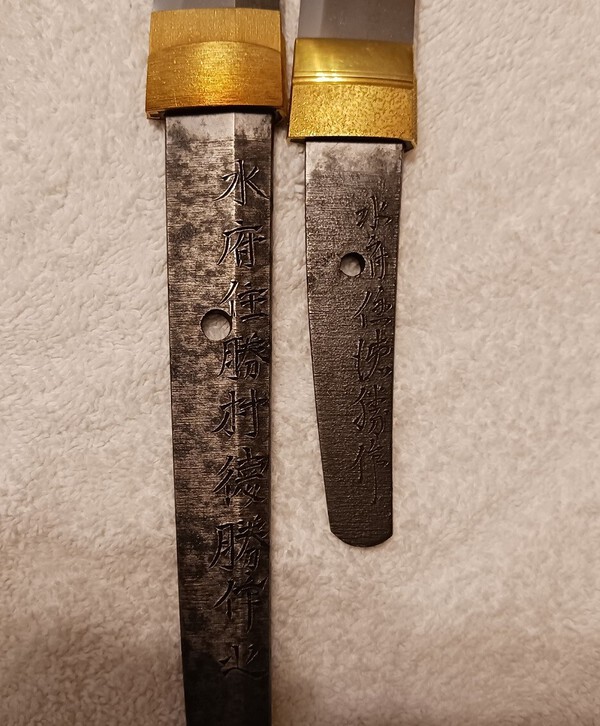
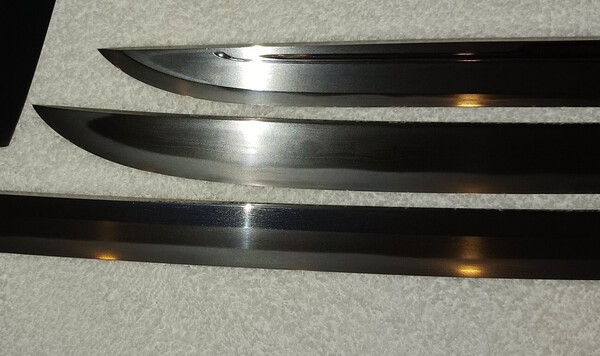
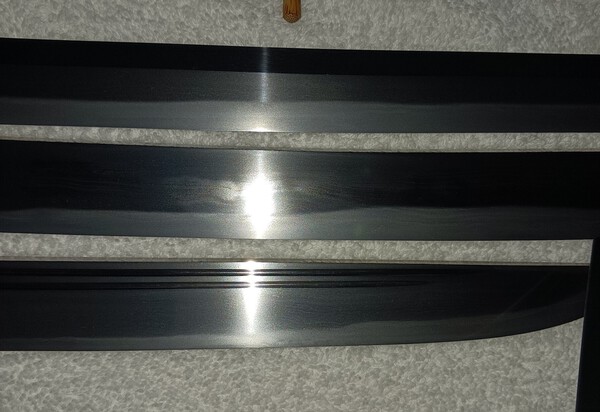
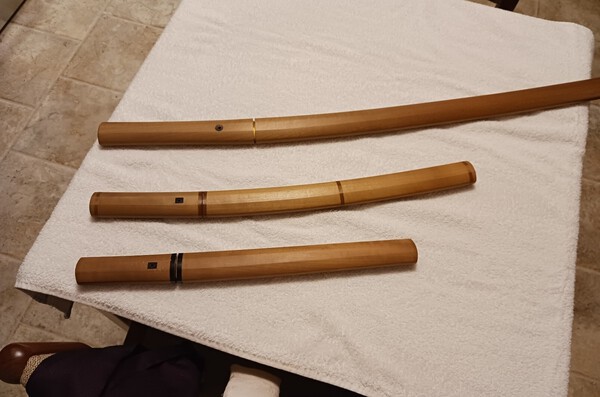
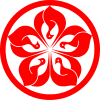
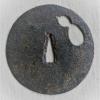
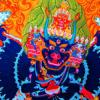
.thumb.jpg.32c5460a9e6fb87d24a39ef1f0ae6bc0.jpg)
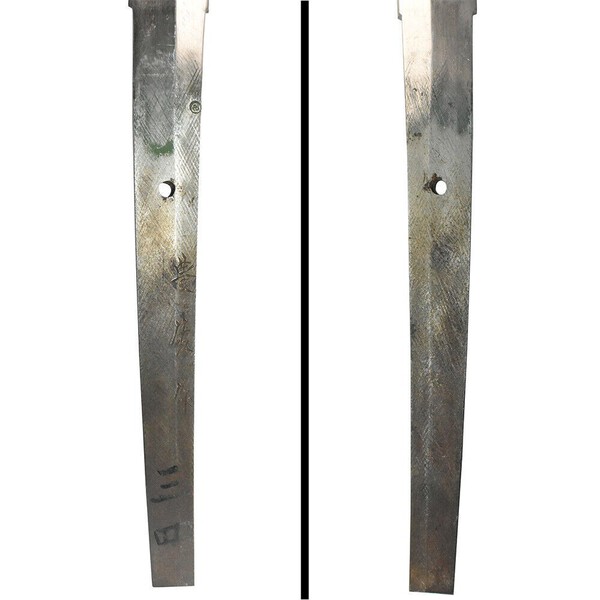



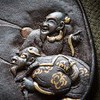
.thumb.png.85f3fd036d09507865860724219753c4.png)
